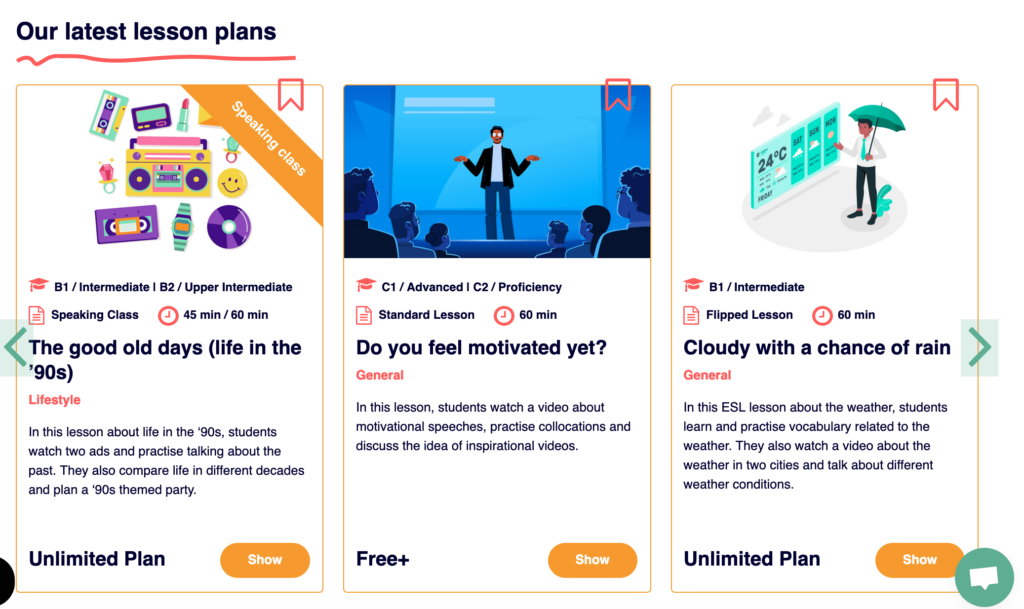Using essays to prompt discussions in ESL class is a great way to encourage students to think critically and express their opinions on a particular topic. This is why reading an essay and discussing it is a classic ESL lesson plan model.

How to create a lesson plan based around discussions
If you are stumped for a lesson that uses an essay and discussion format, you can follow this plan.
- Pre-teach vocabulary. Pre-teach the students a list of vocabulary words that will be in the essay. You can have a vocabulary-matching activity or discuss the meaning of each word and use sample sentences to demonstrate the meaning of each word.
- Read Essay: Ask students to read the essay or, if there are more students in the class, encourage a round-robin read-aloud. One student reads a paragraph and then chooses the next student to read.
- Discussion Questions: Prepare Discussion Questions about the essay
Here are some examples
If you decide to structure your ESL lesson this way, there are many resources for finding great articles for your students. Though more and more news sources are moving behind a paywall, you can always use free news sources for articles.
Which news websites are still free? Here are some sites you can use to find free news articles:
- BBC – the classic! The BBC is the world’s leading public service broadcaster but remember that it will utilize British English.
- NPR. NPR is an independent, nonprofit media organization that was founded on a mission to create a more informed public and it is a fantastic resource for your ESL students
- The Guardian– a free British paper with a left-wing slant. The “Life and Style” section s an excellent resource for intermediate English learners because the articles are written in accessible, conversational English
- WHYY– Standing for “Wider Horizons for You and Yours” , PBS and WHYY content will continue to be available for free on PBS.org, the WHYY website and other digital platforms.
- NBC
- CNN– CNN is a good resource for breaking news, especially U.S centric news
None of these sites are behind a paywall and all can be used in online classes. There are also some nifty tricks to accessing news articles without a prescription that could help you utilize other sites for your classes.
*Also, don’t forget that you can use TedTalks to prompt discussion.
Don’t forget, in addition to using essays to prompt discussion you can always use icebreaker questions as discussion prompts, too. You can even find many websites with interesting conversation prompts sorted by category.
Be sure to use open-ended questions so students cannot answer with a simple yes.
Excellent resources for ESL discussions
Here my top picks for excellent content creators and websites where you can download and find ready-to-use lesson materials.
Engoo is a great resource for finding ESL discussion prompts
Ellii lesson plans also have very good discussion prompts that include CCQs and further reading activities that relate to the discussion. The subscription to Ellii is not free, but it is worth the money if you want professional-level ready made lesson plans
Breaking News English has 3305 free Easy News English lesson plans. This is an excellent resource if you want to discuss current affairs but only have students read snippets (rather than complete news articles). Their EFL/ESL lessons present news articles in 7 levels, so you can differentiate for your students.
Here is a sampling of the news articles they offer.

ESL brains offers pre-made topical lesson plans based on authentic materials. Their ESL lesson plans are free. Their material gives your students a variety of real-life English videos and it is geared towards adult students across all the six English levels (A1, A2, B1, B2, C1, C2).
Here is a sampling of their fun lesson topics.

Ted Talk is also a tried and true discussion prompt resource. Watch the video as a class and discuss. If you want additional vocabulary and grammar exercises, you can also use Keynote books, which have activities revolving around Ted Talks.
Why is using essays as discussion prompts effective?
- Provides a Common Topic: By using an essay as a prompt for discussion, students have a common topic to focus on, which can help to keep the conversation organized and focused.
- Builds Vocabulary: Essays typically use more complex language than everyday speech, and reading and discussing essays can help students to build their vocabulary and improve their reading comprehension.
- Encourages Critical Thinking: Essays often present a variety of viewpoints and arguments, which can encourage students to think critically about the topic and consider different perspectives.
- Develops Communication Skills: Discussing essays in class requires students to practice their communication skills, such as expressing their opinions clearly, responding to others’ viewpoints, and asking questions.
- Fosters Cultural Understanding: Essays can offer insight into different cultural perspectives and experiences, which can help students to develop a better understanding of different cultures and ways of thinking.
Overall, using essays as discussion prompts in ESL class can be an fruitful way to engage students in critical thinking, build vocabulary, and improve communication skills while fostering cultural understanding.
If you are interested in learning more, you can also read these related posts.
My Favorite Essays for Discussion Prompts
In addition, here are some of my specific favorite essays for prompting discussion. They’ve always generated lively, lighthearted discussions.
- On Self-Respect: Joan Didion’s 1961 Essay from the Pages of Vogue
- “What to Do When You Hate the One You Love” by Amie M. Gordon
- The Radical Woman Behind “Goodnight Moon”
- Swedish Meatballs Are Turkish? ‘My Whole Life Has Been a Lie’
- How Has Technology Changed the Concept of Community?
Don’t forget, in addition to using essays to prompt discussion you can always use icebreaker questions as discussion prompts, too. You can even find many websites with interesting conversation prompts sorted by category.
6 tips for ESL discussion prompts
1. Be sure to use open-ended questions so students cannot answer with a simple yes.
2. Make them authentic. Use real-life scenarios.
3. Pre-teach any useful vocabulary that the students might need while discussing the topic
4. Encourage peer-to-peer conversation. Utilize breakout rooms on Zoom or separate students into pairs and assign them some discussion prompts that they can address together and then present to the overall group.
5. Use visual aids: Including pictures, videos, or other visual aids can help stimulate discussion and provide context for the topic being discussed.
6. Keep it happy. If these are new students, keep the topics feel-good so the student leaves your class feeling great. Try to avoid heavy hitting debate discussions unless you have already built a rapport with the group and established trust in the class.
If you are interested in learning more, you can also read these related posts.







